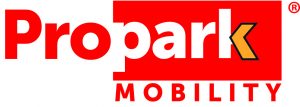By Casey Jones, CAPP
 A FUNDAMENTAL SHIFT IN THE PARKING INDUSTRY has occurred during the past decade or so in which parking professionals see their role as service providers rather than simply ensuring cars are parked between yellow or white lines. This shift has resulted in a sea change in the relationship between the provider of parking and the parker and has given rise to the development of new technologies, services, and products aimed at improving the parker experience.
A FUNDAMENTAL SHIFT IN THE PARKING INDUSTRY has occurred during the past decade or so in which parking professionals see their role as service providers rather than simply ensuring cars are parked between yellow or white lines. This shift has resulted in a sea change in the relationship between the provider of parking and the parker and has given rise to the development of new technologies, services, and products aimed at improving the parker experience.
Another shift is currently underway that is perhaps even more tectonic in nature and further defines not just the relationship between the deliverer of the service and the receiver, but what services our industry is tasked to provide.
The parking industry is beginning to embrace the idea that our product is more than just a space to park cars and that instead we provide access and mobility. Access allows people to reach the destinations of their choice, whereas mobility is the ease at which we move from point A to point B. We’re beginning to realize that a significant enough number of commuters desire access to multiple transportation modes and are likely to use alternatives to driving, at least part of the time, if we couple parking and transportation options in a complementary and seamless manner. In the U.S., universities and colleges are leading this revolution and serve as examples for the entire industry.
Driving Change
There are many factors driving this shift. First, and perhaps most importantly, higher education in the U.S. is facing significant budgetary challenges. To remain competitive and relevant, institutions of higher education must add high-caliber faculty, offer inspiring and up-to-date buildings and facilities, and provide programs that inspire, entertain, and support life-long loyalty from alumni. Building parking structures can be expensive, and the typical method of paying for parking garages with permit and citation revenue is largely insufficient to construct what is needed. Even if permit holders can fund new garages through increases in permit fees, there is often little or no political appetite for such endeavors.
Second, a growing sector of the campus community—namely students—wants commuting options. Sometimes riding a bike to campus is desired while other trips require a car. Sometimes taking Uber or Lyft is the best option while other times the campus shuttle or public transportation works just fine. The myriad of choices is a good thing, but often the options are not designed to work together to provide a mix-and-match approach that can save money and time and improve convenience. Commuters are typically left to figure out on their own how to fit the options together.Fortunately, several high-performing university parking and transportation programs are figuring out that people shouldn’t be considered uni-modal and may, in fact, prefer to use different options depending on the day, season, and circumstance. Knitting together commuting services in a seamless, convenient, and effective manner is referred to as mobility-as-a-service (MaaS).
Mobility as a Service
The MaaS Alliance is a European public-private partnership working to create “the foundations for a common approach to MaaS, unlocking the economies of scale needed for successful implementation and take-up of MaaS in Europe and beyond.” Its goal is to facilitate a single open market and full deployment of MaaS services.
The Alliance defines MaaS as “the integration of various forms of transport services into a single mobility service accessible on demand. To meet a customer’s request, a MaaS operator facilitates a diverse menu of transport options, be they public transport; ride-, car-, or bike-sharing; taxi or car rental/lease; or a combination thereof.”
The European MaaS framework centers on a single commercially motivated, private-sector technology aggregator that interfaces directly with the consumer. In the U.S., it is more probable that public-sector providers of parking and transportation will remain as the centerpiece of the commute services delivery. Public-sector players may be supported by both private operators and technology providers, but delivery will likely flow through the owners of publicly owned facilities and services. The U.S. version of MaaS is mobility on demand (MOD) which, according to the U.S. Department of Transportation, is defined as “an innovative, user-focused approach which leverages emerging mobility services, integrated transit networks and operations, real-time data, connected travelers, and cooperative Intelligent Transportation Systems (ITS) to allow for a more traveler-centric, transportation system-of-systems approach, providing improved mobility options to all travelers and users of the system in an efficient and safe manner.”
To avoid confusion between MaaS and MOD, I’ll use the term “intermobility” to describe offering a variety of commuting options in a coordinated, complementary, and flexible manner that may or may not be tech-enabled. In the U.S., intermobility is already well beyond the concept stage and found most often at progressive, forward-thinking institutions of higher education. Here are some examples:
Arizona State University
Arizona State University’s (ASU’s) robust alternative transportation features the Eco-Pass program that ties together important modal options. Registered bicyclists, holders of high-occupancy-vehicle carpool permits, and student and employee bus pass holders can purchase a discounted bundle of 30 all-day parking passes for parking in a designated parking lot or structure.
The University of Virginia
The University of Virginia provides incentives in which carpool (known as Cavpool) members get 20 occasional use parking permits per year when they sign up to become members. For added flexibility, permits are interchangeable among members of the same carpooling group.
Stanford University
Stanford University in California offers the Commute Club, which includes incentives to reduce parking demand while providing modal flexibility. For starters, members receive up to $300 per year for agreeing not to drive alone or park near campus. Club members can buy up to eight daily parking permits per month for times they need to drive and can pocket a few hundred dollars per year even when they buy the maximum number of daily permits allowed. Eligible commuters also receive free transit passes and can join a free vanpool or receive a free permit if they carpool. Promotions during the spring and fall include generous prize drawings for members and make the program fun and exciting.
University of Wisconsin
Flex Parking is available at the University of Wisconsin. Users of this program sign up for parking for a specific lot or garage but only pay for the actual time they are on campus. Unlike the typical annual parking pass, this approach promotes the use of alternatives to driving. Another innovation allows members of carpools and vanpools to have priority over non-carpoolers when permit renewal occurs. Front-of-the-line privileges mean those who share a ride get their pick of campus parking locations.
Boise State University
Several years ago, Boise State University in Idaho offered 10 scratch-off daily parking passes for bicycle commuters who purchased access to the university’s secured bicycle storage facility known as the Bike Barn. The program was recently revamped. Now called the Deluxe Bicycle Registration program, the program provides registrants access to secure bicycle storage; their bike is registered (easier to recover if stolen) and they receive four all-day parking passes and 15 percent off university bike shop merchandise and services.
Sacramento State University
Most schools have a mobile app that provides a wealth of information about events, dining options, athletics, and more, and most also provide some information about parking and transportation. Sacramento State University in Californa features commuting information prominently on its app, and with one click users can get real-time parking availability information, pay for parking, find out when the next shuttle arrives, and find bicycle routes and bike parking options.
Keys to Success
The examples above make clear a few emerging keys to intermobility success:
- Less all-you-can-eat. In The High Cost of Free Parking, Don Shoup cleverly (and accurately) labels the typical way of selling annual parking permits as “all-you-can-eat.” The problem, Shoup notes, is that when you sell someone something for a whole year, they’re likely to use it. This may not be true of gym memberships, but it’s true for parking. A meaningful enough number of people on your campus may only want or need to drive occasionally. Let’s figure out who those people are and sell boutique permits that may only be good for certain days of the week.
- Data is key. If we intend to sell fractional parking permits, we’ll need to have a good handle on how our parking facilities are used by day, week, season, and time of day so we don’t over- or under-sell them. Collecting, analyzing, and making data-driven decision will help us ensure that a space will be available even for the occasional parker.
- Flexibility is a must. I live in a place that isn’t all that friendly to biking a few months out of the year. What’s more, life happens to people, and a mode that seemed to work at one point in your life may not meet all your commuting needs at another time. Intermobility requires flexibility so people can pick and choose their modal options based on what best meets their needs. Like with a cellphone contract with no immediate way out, commuters may feel as if making the shift from one mode (driving) to something else (public transportation) may be too much of a commitment because they anticipate life happening. The best intermobility programs are those that provide patrons with the most flexibility and an easy way to move from one mode to another based on their needs.
- Parking is still prime. Let’s face it: Driving is still the dominant mode of transportation and is likely to be for the foreseeable future. Experience suggests that many within the campus community are reluctant to move completely away from their preferred option. The successful intermobility professional understands this and will package offerings to include parking. Several occasional-parker options exist in the higher education space. Maybe we need to welcome and accommodate occasional cyclists and transit riders with pricing and service packages that allow parking most of the time. The truth is that even a modest modal shift away from single-occupancy driving will have a meaningful effect on parking demand, especially if we can spread the reduction in demand broadly across facilities and times of peak occupancy.
- Single point of sale. Most commuters need some help figuring out what commuting options work best for them, and if we up the complexity ante by allowing people to piece their commutes together as they see fit, we’ll likely need a common delivery platform and a single customer interface that easily allows access to each mode.
- Partnerships make it possible. Universities typically control most, but not all, the modal programs and services offered on a campus. Public transportation systems, private parking owners adjacent to campus, transportation network providers, and others are involved in the provision of transportation services; partnering with outside entities will be essential to maximizing access and mobility and customer convenience most of all.
We’ve understood for a while that we maximize access and mobility when we design, build, and operate parking facilities to accommodate multiple modal options. We also accept and embrace that ours is a service industry and that providing a positive customer experience is crucial to our success and relationship with those we serve. It’s now time to fully integrate parking and transportation programs and services to accommodate a mix of commuting options that offer convenience, flexibility, efficiency, and ease of use.
The truth is that even a modest modal shift away from single-occupancy driving will have a meaningful effect on parking demand, especially if we can spread the reduction in demand broadly across facilities and times of peak occupancy.
Read the article here.
CASEY JONES, CAPP, is vice president at Timothy Haahs & Associates, Inc. He can be reached at cjones@timhaahs.com.



 In an effort to spread awareness about parking options, the City of Royal, Oak, Mich., has partnered with local businesses to offer drivers gifts if they park in garages.
In an effort to spread awareness about parking options, the City of Royal, Oak, Mich., has partnered with local businesses to offer drivers gifts if they park in garages.